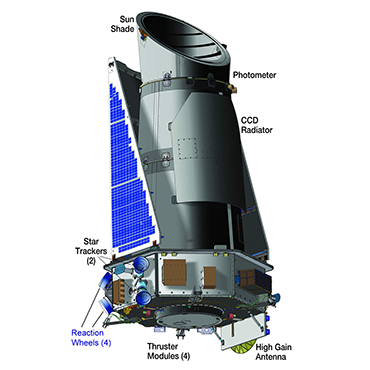NASA Kepler repair begins

Scientists are undertaking a long-shot effort to fix a space telescope that has confirmed the existence of 134 planets outside of our solar system.

A diagram of the Kepler space telescopr. (NASA image)
NASA's week-long effort to fix its $550 million planet-hunting Kepler telescope began July 18.
Kepler, which has confirmed the existence of 134 plants outside our solar system, broke down in May when a second of its four reaction wheels quit working properly, forcing the agency to sideline the telescope as it orbits the sun 40 million miles away from Earth.
Since the breakdown, NASA engineers have come up with a plan to attempt to resurrect at least one of the two bum reaction wheels, beginning with detailed diagnostic reviews of the malfunctioning components.
The rescue effort's second phase involves actually trying to get the reaction wheels spinning again – the resurrected movement of one is necessary for the telescope to position itself precisely enough to monitor for changes in the brightness of stars its lens targets.
Without at least three of its four reaction wheels operational, Kepler's planet-finding days are over, though the space agency has said it will still have uses for Kepler, albeit far less important ones, if the effort fails.
NASA officials are not optimistic about their chances, but Kepler has produced significant results already. Launched in 2009, the satellite found more than 100 confirmed planets and detected another 3,200 possible candidates, 90 percent of which scientists believe will eventually be confirmed. In addition, Kepler produced enough unexamined data in its four-year lifetime to keep scientists on Earth busy for another two years.






